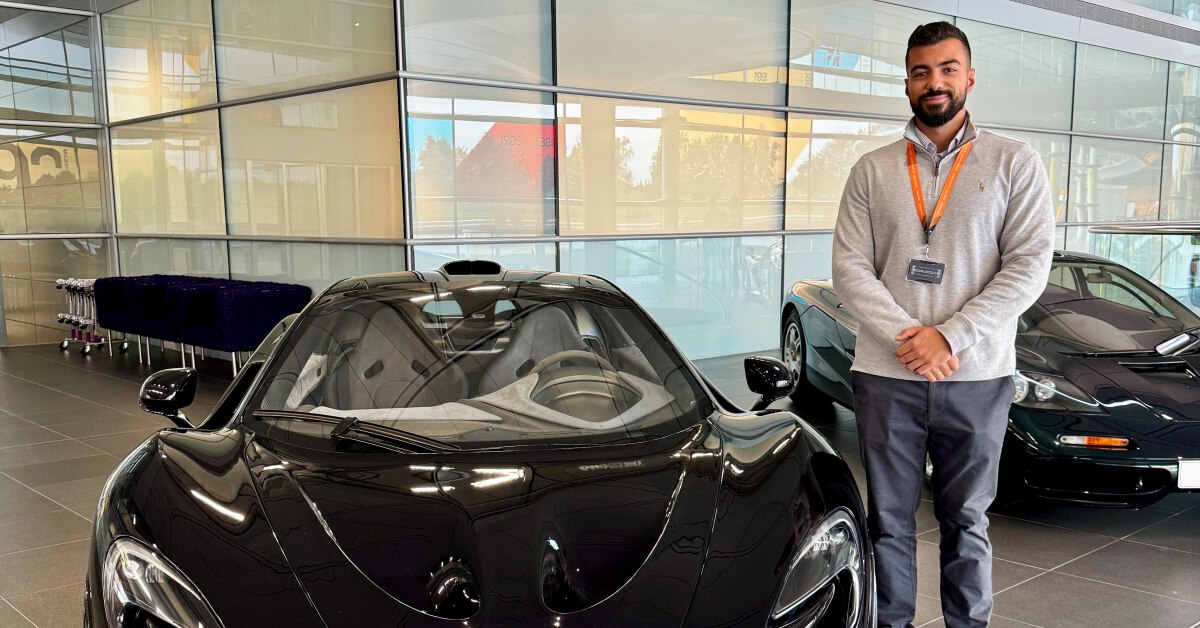Vienna’s Study Tour Part 1 – REWE International AG and voestalpine Stahlwelt
29/04/2016

Hey everyone, we have lots for you to read during the long weekend!
Since Nok and I were both on Vienna’s tour, we’ve decided to share our wonderful experiences with you in two blog posts – Part 1 will cover the visit to REWE (one of the largest supermarket chains in Germany and Austria)’s central warehouse in Biedermannsdorf and the tour to voestalpine Stahlwelt’s steel plant in Linz.
The group had 30 students and 2 faculty members in total. We landed in Vienna airport at around 11am on the 19th of April and headed straight to our first visiting site – REWE.
We started off with a very informative presentation introducing us to REWE Group and its supply chain functions across Austria. It was a real excitement for us to be so close to a “case study” after we’ve studied so many of them on our course at Cranfield.
The warehouse was opened in 1995 and is equipped with fully automated high-bay storage. It was an eye-opener for us to see every single part of the warehouse operations and different types of equipment, especially after completing a warehouse design assignment very recently. Here are some of the photos during the tour:
Overall, the warehouse tour was a great learning experience and we were able to ask many questions regarding the design features and general operations. The first day’s visit finished relatively early so the group could have a good rest after the early flight in the morning. We settled in a hotel in central Vienna during our 4-day tour.
On the second day, we traveled by coach across almost half of Austria to Linz. It was such a nice day and the group was amazed by the fascinating interior as we entered voestalpine Stahlwelt’s visitor centre – the main hall is decorated with dozens of enormous, polished steel bulbs that reflect each other with changing lights.
We took a bus tour through the actual steel works with stops at the blast furnace, the hot-rolling mill and the blank production facility. It was a rare opportunity to get a feel for the sheer size of a major industrial operation involving thousands of tons of material. Having the chance to feel the heat of melted steel flowing into the mill was also very exciting.
Since photos weren’t allowed to be taken during the tour, we are not able to share any here in the blog. Apart from the plant tour, we also had an insightful presentation on voestalpine’s supply chain management operations and learnt about the organisation’s approach to demand management.
Well, I shall leave you to enjoy the rest of the tour with Nok in Part 2 😉 Bye for now.
Categories & Tags:
Leave a comment on this post:
You might also like…
Preparing your work for Turnitin submission
Before submitting your work into Turnitin for similarity checking, if you have used referencing software then you may need to take some important steps first. Mendeley and Zotero integrate with MS Word by embedding field ...
The fast track to supercar engineering: My Cranfield journey
It’s been a dream come true to work on some of the world’s most prestigious supercars – the Aston Martin Valhalla, McLaren 750 & Artura, the GMA T.33. But every successful ...
Automotive Engineering: From student to hypercar innovation at Rimac
We sat down with recent graduate Thomas Perrin, to discuss how his year on the MSc in Automotive Engineering at Cranfield University propelled him from the lecture hall directly into the ...
What this year at Cranfield really meant to me
Every Cranfield journey is unique. In this alumni reflection, Zachea Scicluna shares what her year at Cranfield truly meant, from facing uncertainty to gaining hands-on experience in industry-backed projects. I’ve been reflecting (and delaying) ...
Preparing for assignments and exams?
Sorry! We know it seems a bit mean to mention the exams in January rather than looking forward to the break before it! However, we know many of you will be thinking about your forthcoming ...
Screening for FTSE 100 companies on Bloomberg
So you’re researching an index and need some data on its constituent companies? Bloomberg’s Equity Screening tool makes light work of this, not just for the FTSE, but for indices, exchanges and sectors worldwide. Type EQS ...



















